Inflation Summary:
- Annual Inflation up sharply from 2.62% in March to 4.16% in April.
- CPI Index rose massively from 264.877 in March to 267.054 in April.
- Monthly Inflation for March was 0.71% and for April was 0.82%.
- We have to go back to the Oil Peak of 2008 to see higher inflation.
- Next release June 10th
Annual inflation for the 12 months ending in April was 4.16%
We have been predicting Annual Inflation would shoot up in March and April due to negative numbers falling out of the annual calculation.
Since the BLS rounds their numbers to 1 decimal place they reported March as 2.6% and April as 4.2% taking inflation well above the FED’s 2% target rate.
Due to the Saudi/Russia oil price war and the Corona Virus, March and April 2020 were -0.22% and -0.67% respectively resulting in a massive disinflationary environment.
March 2021 was 0.71% which replaced the -0.22% causing an almost 1% increase in the annual inflation rate.
April’s massive 0.82% replaced the negative -0.67% giving us a massive jump in Annual Inflation.
(i.e. ABOVE the September 2011 peak… see chart below).
BLS Commissioner’s Inflation Report:
According to the BLS commissioner’s report, “The Consumer Price Index for All Urban Consumers (CPI-U) increased 0.8 percent in April on a seasonally adjusted basis after rising 0.6 percent in March, the U.S. Bureau of Labor Statistics reported today. Over the last 12 months, the all items index increased 4.2 percent before seasonal adjustment. This is the largest 12-month increase since a 4.9-percent increase for the period ending September 2008.
The index for used cars and trucks rose 10.0 percent in April. This was the largest 1-month increase since the series began in 1953, and it accounted for over a third of the seasonally adjusted all items increase. The food index increased in April, rising 0.4 percent as the indexes for food at home and food away from home both increased. The energy index decreased slightly, as a decline in the index for gasoline in April more than offset increases in the indexes for electricity and natural gas.
The index for all items less food and energy rose 0.9 percent in April, its largest monthly increase since April 1982. Nearly all major component indexes increased in April. Along with the index for used cars and trucks, the indexes for shelter, airline fares, recreation, motor vehicle insurance, and household furnishings and operations were among the indexes with a large impact on the overall increase.
When we measure it to two decimals (on a non-adjusted basis) monthly inflation was 0.82% in April and annual inflation was 4.16% rather than 4.2%. Key components are the increase in Energy prices which increased 25.1% over the last year but declined slightly over the last month. However, much of the energy increase was because there was a major drop a year ago due to the oil price crash and COVID. For more information see the price changes in various components of the Consumer Price Index over the last 20 years.
Seasonally Adjusted Inflation Components Table
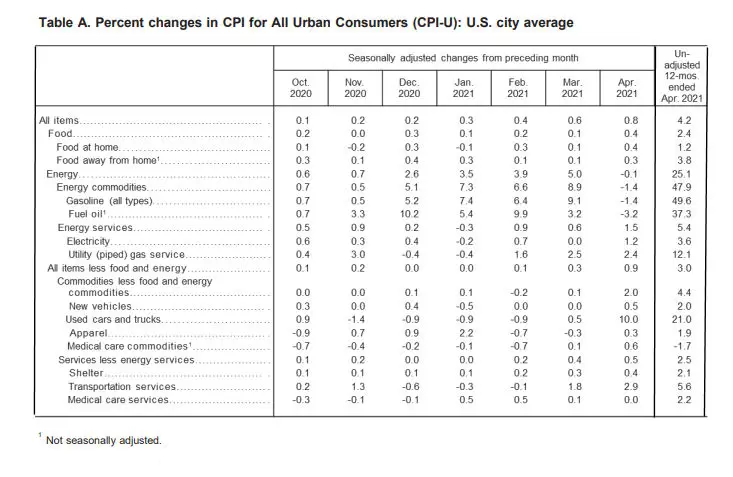 The Inflation table above is updated monthly and provides the current Annual US Inflation Rate (not seasonally adjusted) in the right-hand column and the other columns show various monthly components on a Seasonally Adjusted basis. The big surprise for April was the 10% jump in Used Cars and Trucks and the slight decline in energy prices for the month (although that has already been erased in May). The massive gain in energy costs for the year has a lot to do with the fact that last year prices fell drastically due to COVID.
The Inflation table above is updated monthly and provides the current Annual US Inflation Rate (not seasonally adjusted) in the right-hand column and the other columns show various monthly components on a Seasonally Adjusted basis. The big surprise for April was the 10% jump in Used Cars and Trucks and the slight decline in energy prices for the month (although that has already been erased in May). The massive gain in energy costs for the year has a lot to do with the fact that last year prices fell drastically due to COVID.
The Inflation rate is calculated using the Current Consumer Price Index (CPI-U) published monthly by the Bureau of Labor Statistics. CPI Index Release Dates
Annual Inflation Chart:
Annual inflation has soared out of the top of the channel and exceeds the peaks all the way back to (and including) September 2011. We have to go back to the Oil Peak of 2008 to see higher inflation.
Current Inflation Situation
Looking at just the most recent 10 years we can easily see the higher April levels compared to September 2011.
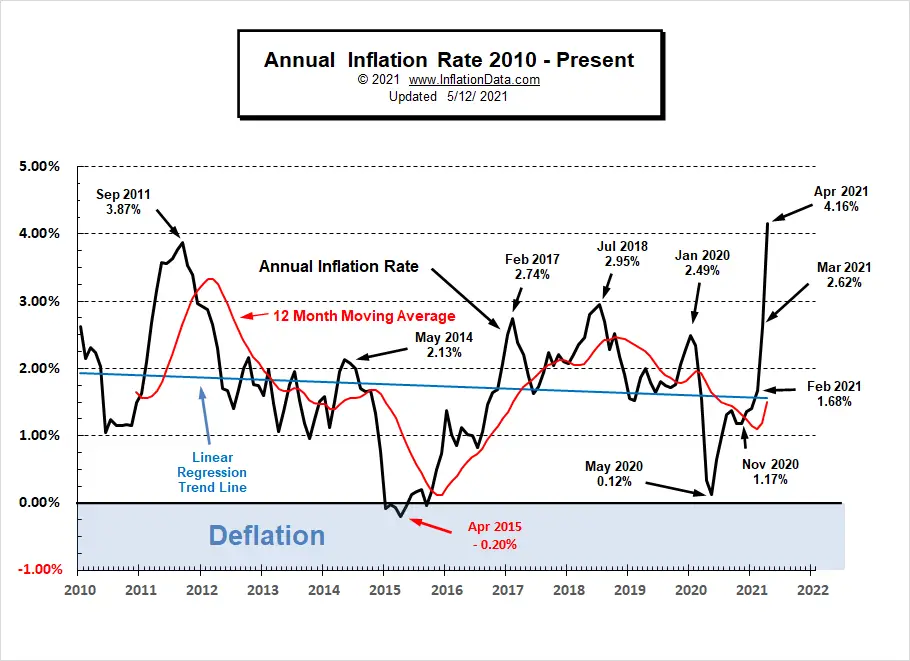 Moore Inflation Predictor (MIP)
Moore Inflation Predictor (MIP)
This month we will continue with the dotted blue line projecting what will happen if the FED is wrong and inflation doesn’t return to normal. Worst case scenario we could see 6.5% inflation by December if the FED’s money loose money policy results in consumer price inflation rather than just inflating the stock market. The projected decline is possible since last year saw higher than normal summer months (to make up for the lower than normal spring). So if this year has normal inflation during the summer, fall, and winter inflation could fall back to 3.5% but with the FED’s massive quantitative easing much higher inflation is also possible.
See: Moore Inflation Predictor for current info
Not Seasonally Adjusted Monthly Inflation Rates
Monthly inflation for June was 0.55% comprising the majority of the annual inflation since March and April’s deflation canceled out much of the rest of the year’s inflation and now in February, we got another 0.55%.
| Jan | Feb | Mar | Apr | May | Jun | Jul | Aug | Sep | Oct | Nov | Dec | |
| 2016 | 0.17% | 0.08% | 0.43% | 0.47% | 0.41% | 0.33% | (0.16%) | 0.09% | 0.24% | 0.12% | (0.16%) | 0.03% |
| 2017 | 0.58% | 0.31% | 0.08% | 0.30% | 0.09% | 0.09% | (0.07%) | 0.30% | 0.53% | (0.06%) | 0.002% | (0.06%) |
| 2018 | 0.54% | 0.45% | 0.23% | 0.40% | 0.42% | 0.16% | 0.01% | 0.06% | 0.12% | 0.18% | (0.33%) | (0.32%) |
| 2019 | 0.19% | 0.42% | 0.56% | 0.53% | 0.21% | 0.02% | 0.17% | (0.01%) | 0.08% | 0.23% | (0.05%) | (0.09%) |
| 2020 | 0.39% | 0.27% | (0.22%) | (0.67%) | 0.002% | 0.55% | 0.51% | 0.32% | 0.14% | 0.04% | (0.06%) | 0.09% |
| 2021 | 0.43% | 0.55% | 0.71% | 0.82% |
See: Monthly Inflation Rate for more information and a complete table of Unadjusted Monthly Rates.
For more information See Annual Inflation.
Federal Reserve Actions
In the following chart, we see the Federal Reserve Total Assets have gradually increased over the last few months after a decrease in assets (QT) from June 10th through July 8th 2020. From there it gradually increased through much of the remainder of 2020 and into 2021. And the FED says they have no plans to stop any time soon. Quantitative Easing is like the Crack Cocaine of the stock market because you always need more to get a new high. And even a slight reduction brings the market down. Obviously, it can’t go on forever but like all politicians, the FED just wants to kick the can down the road a little further. And so we are seeing the latest injection.
To put this in perspective we need to look a bit further back. Currently, FED assets are roughly 7.8 Trillion, (up from 7.6 trillion last month), an addition of 1.9 Trillion from the start would take them to roughly 9.5 Trillion.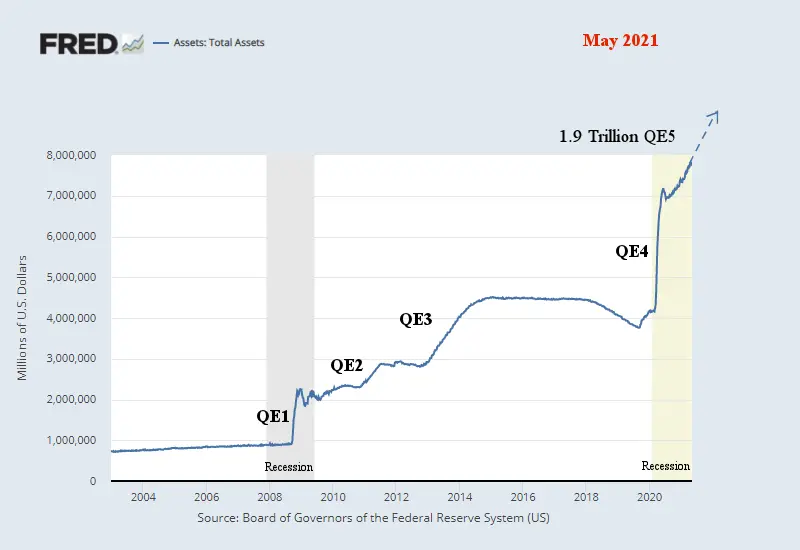
Up until 2008 FED assets never exceeded 1 Trillion then they decided to bail out the stock market, so they invented Quantitative Easing and increased FED assets by roughly 1.2 Trillion with QE1. QE2 brought total assets up to almost 3 Trillion. QE 3 added another 1.5 Trillion bringing total assets up to about 4.5 Trillion. Quantitative tightening brought assets back down to 3.7 Trillion but tanked the stock market taking the NYSE from 13,605 on January 29, 2018, to 10,976 on December 24, 2018 for a loss of roughly 19.3%. So if a decrease in FED assets of 0.8 Trillion can cause the market to lose 19% what will an increase of 1.9 Trillion do to the market?
FED Funds Rate
In the chart below, we can see that the FED Funds Rate peaked at 2.42% in April 2019 then the FED began fearing that it was holding too tight and the stock market was suffering so it began easing. It leveled off in November at 1.55% where it stayed until February. At that point, COVID tanked the market, and the FED loosened rates to virtually zero (actually 0.05%) five one-hundredths of a percent. In June they moved it up to eight one-hundredths of a percent and then in July, it inched up another one-hundredth of a percent. Then in August, it moved up another one-hundredth of a percent to 0.10% (i.e. one-tenth of 1%). Interestingly, even that was too high because they lowered it in September back to 0.09% where it remained through January 2021. In February the FED lowered the FED Funds Rate back to 0.08% and in March they lowered it again to 0.07% where it stayed for April as well. Chart Source St Louis FED.
For more info See NYSE ROC and MIP.
Misery Index
In September 2019, the Misery index bottomed near all-time lows at 5.21%.
By March 2020, it had climbed slightly to 5.94%. But in April, due to the COVID-19 shutdown and consequent high unemployment, the Misery Index shot up to 15.03% based on 14.7% unemployment and 0.33% inflation. By January 2021 it had retreated to 7.70% but due to the current spike in inflation it March it was back up to 8.62% based on 6.0% unemployment and 2.62% inflation.
Due to a spike in inflation, in March 2021 the misery index rose to 8.62%. Although unemployment fell slightly to 6.0% inflation rose sharply to 2.62%. By April 2021 inflation had spiked to 4.16% and Unemployment rose slightly to 6.1% taking the misery index up to 10.26%.
[Read More…]
NYSE Rate of Change (ROC)©
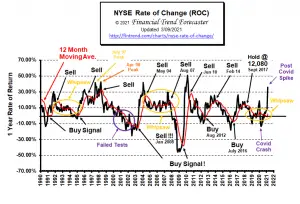
Hold? Signal (Whipsaw)
This month’s NYSE ROC chart shows a massive spike due to comparing against the “V” shaped COVID drop of March/April 2020.
See the NYSE ROC for more info.
NASDAQ Rate of Change (ROC)©
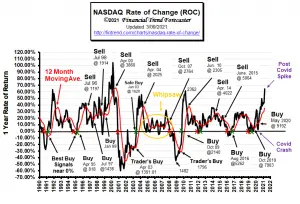
Hold Signal!
The NASDAQ ROC also spiked up drastically.
See NASDAQ ROC for more.
Regional Inflation Information
The U.S. Bureau of Labor Statistics also produces regional data. So if you are interested in more localized inflation information you can find it here.
| AL | AK | AR | AZ | CA | CT | CO | DC | DE | FL | GA | GU | HI | IA |
| ID | IL | IN | KS | KY | LA | MA | MD | ME | MI | MN | MO | MS | MT |
| NC | ND | NE | NH | NJ | NM | NV | NY | OH | OK | OR | PA | PR | RI |
| SC | SC | SD | TX | UT | VA | VI | VT | WI | WA | WI | WV |
You Might Also Like:
From InflationData.com
- March Inflation Skyrockets
- Inflation Adjusted Crude Oil Prices (updated)
- Managing Business During Periods of Inflation
- A Stock Pickers Guide To Thinking About Inflation
- How Inflation Can Effect Rising Prices
From UnemploymentData.com.
- April Unemployment “Disappointing”
- Signs You Need to Upgrade Your Business Equipment
- Fleet Management 101: What Does It Take to Do It Well?
- 6 Tips to Help You in a Successful Job Interview
- Start a Career in Financial Risk Management
- Things to Consider When Opening Your Restaurant
From Financial Trend Forecaster
- NYSE ROC
- NASDAQ ROC
- Common Mistakes When Trading Penny Stocks
- Cisco Systems Stock is on the Move in April
- Why These Stock Market Indicators Should Grab Your Full Attention
- Ripple the Cryptocurrency of Banks
From Elliott Wave University
- Rise of the “Know Nothings”
- Are Investors “Courting Doom”?
- Too Many Bulls?
- You’re invited: Spot the Next BIG Move in Oil, Gas, Energy ETFs (April 7-14)
- Should Stock Markets Fear Inflation or Deflation?
From OptioMoney
- 4 Things to Know Before Buying Car Insurance
- Tips in Buying a Home for Retirement
- Best Real Estate Investments for First-Timers
- Downsizing to Pay Off a Mortgage – Is it a Good Idea?
- Teach Your Kids to Budget Money Effectively
From Your Family Finances
- Home Renovations Before Selling
- Ways to Diversify Your Family’s Investments
- How To Negotiate When Buying a Home
- Growing Family: How to Set up Your Finances for a New Home
- Avoid These Investing Mistakes

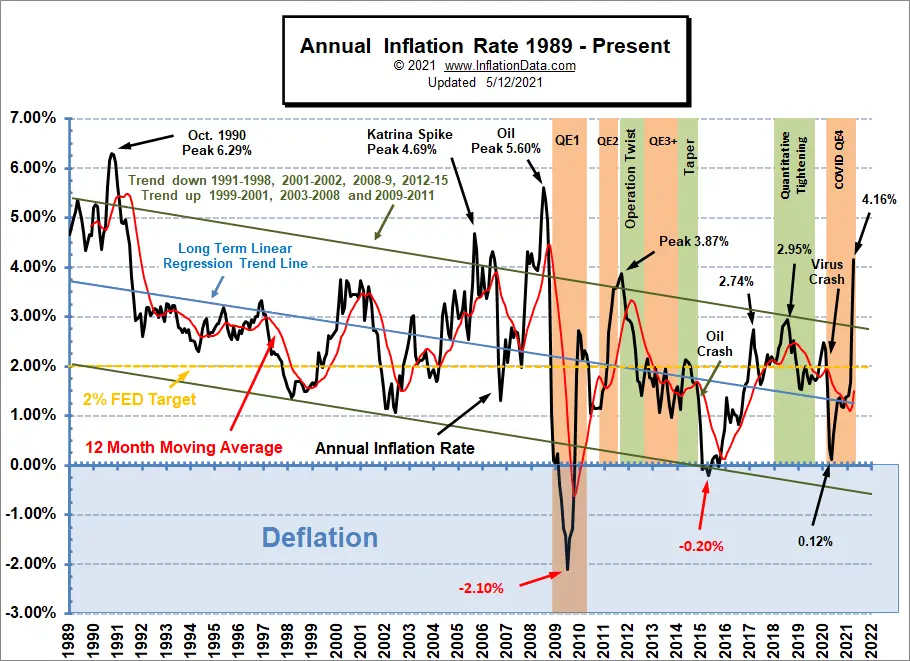
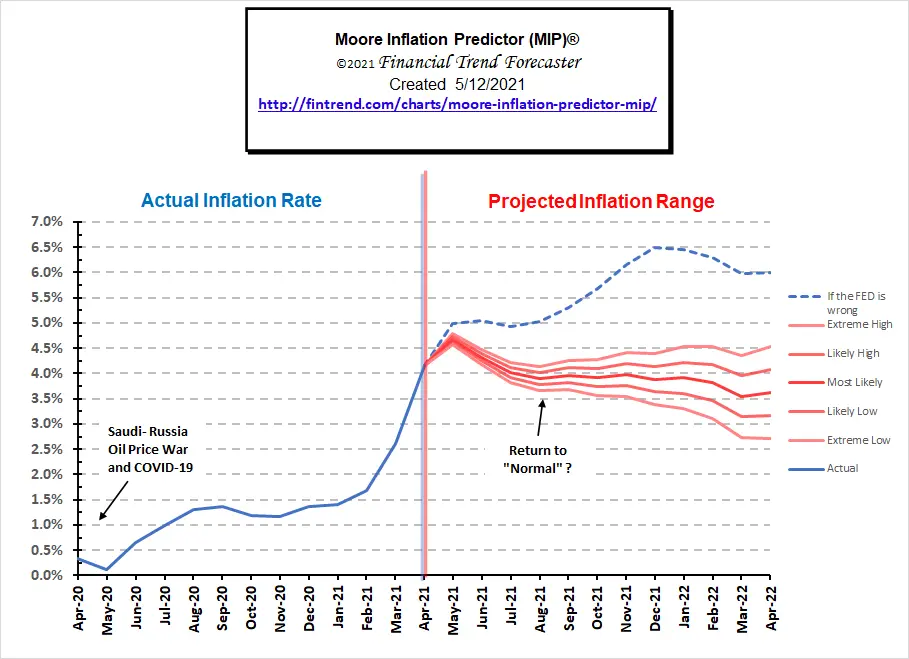
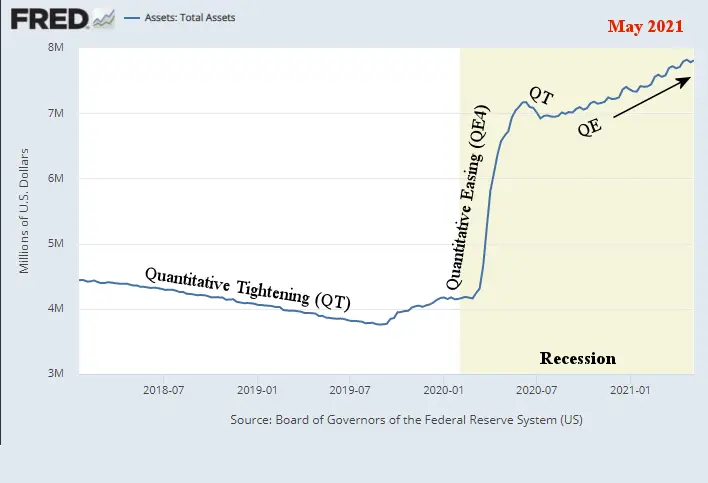
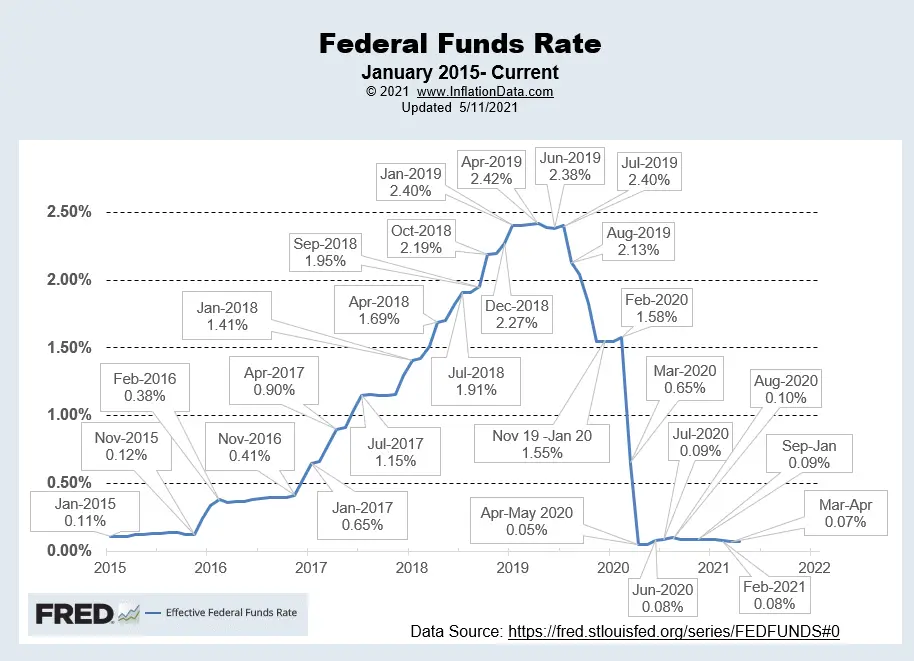


Leave a Reply